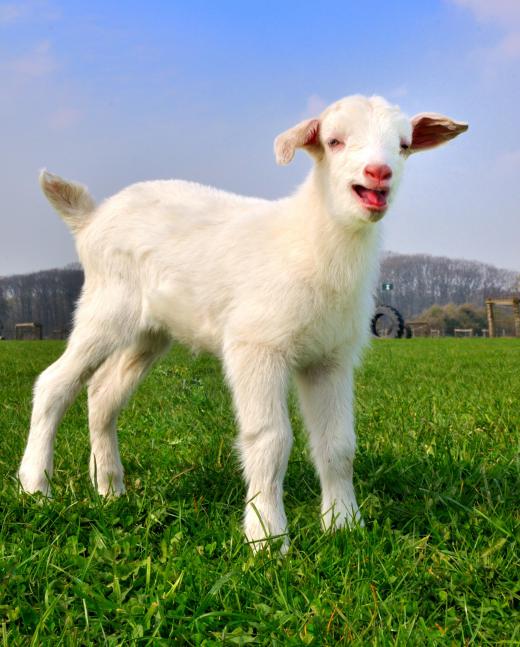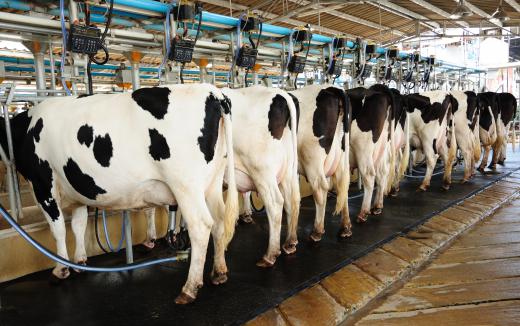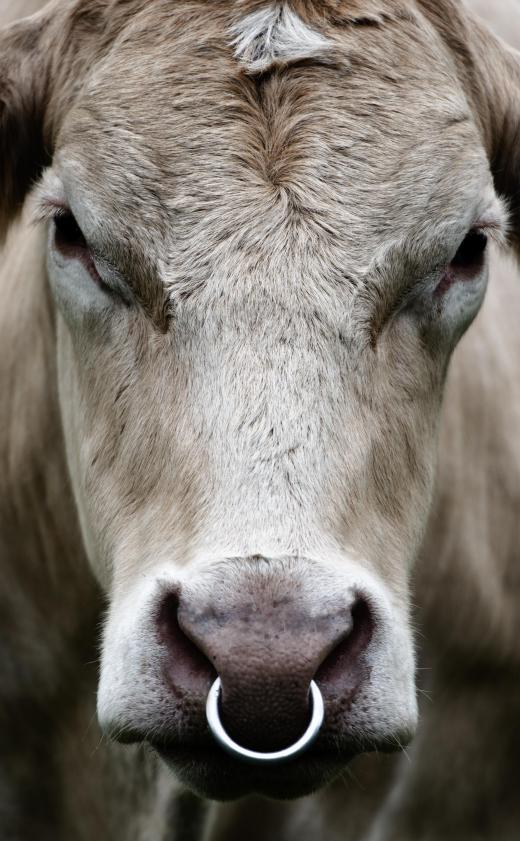A dairy farm is an agricultural facility dedicated to raising and maintaining animals kept for their milk. Classically, a dairy farm houses cows, although it is also possible to raise goats, sheep, yaks, and other animals for their milk. The goal of a dairy farm is to produce high volumes of good quality, safe milk and milk products, and to export them to the surrounding region.
Humans have been keeping animals for their milk for centuries, but the dairy farm didn't really catch on in a big way until people figured out how to handle milk safely. Historically, many communities had a few milk animals which were handled and driven communally, and establishments such as abbeys might keep animals for the purpose of making cheese and other goods for sale. Individual farmers and landholders generally made their own milk and cheese as needed from their cows, sheep, and other animals.

With the advent of storage tanks, pasteurization, refrigeration, and roads accessible to milk trucks in the 1800s, the modern dairy farm began to evolve. Most dairy farms today have large numbers of animals, in the hundreds or thousands as opposed to the dozens found on small farms through the early 20th century, and they produce huge volumes of milk.

The farm includes pasture and shelter for the animals, along with areas for sheltering cows while they labor and give birth. Dairy farms usually keep a bull on hand, or order semen for artificial insemination to get access to especially good bloodlines, and they also have a facility known as a milking parlor, where the cows are milked. Historically, this was done by hand, but modern milking parlors usually utilize milking machines. The milk is transported in sterile tubes to tanks so that it can be tested for pathogens before being pooled on a milk truck. The milk truck takes the milk to a central location for processing.
A dairy farm may also have fields for the purpose of growing fodder, to cut down on costs for the farm. Farms which serve special markets like people seeking organic products can also be found.

Small dairy farms may make their own cheese, butter, yogurt, clotted cream, and other dairy products for sale in the community. This requires special skills and additional licensing and inspections, leading many farmers to prefer to sell their milk to dairy cooperatives or specific manufacturers of products like cheese rather than handling it themselves. When consumers in the store buy Milk Brand X, they are usually buying milk from a large number of farmers who sell their milk to Milk Company X, rather than milk from cows belonging to that particular brand.
Ever since she began contributing to the site several years ago, Mary has embraced the exciting challenge of being a About Mechanics researcher and writer. Mary has a liberal arts degree from Goddard College and spends her free time reading, cooking, and exploring the great outdoors.

